 |
 |
 |
| |
Multiple Missed Chances to Prevent Heart Disease in Urban HIV Clinic
|
| |
| |
IDWeek2017/IDSA, October 4-8, 2017, San Diego
Mark Mascolini
High proportions of people in an urban South Carolina HIV clinic had cardiovascular risk factors like hypertension and overweight/obesity, but their charts often showed no evidence of intervention--and sometimes not even a diagnosis [1]. Fewer than one quarter of patients eligible for statin therapy took a statin.
Atherosclerotic cardiovascular disease (ASCVD) remains a leading cause of death in many HIV populations, partly because people with HIV typically have one or more classic cardiovascular risk factors. Researchers at an urban Ryan White-funded infectious diseases clinic in South Carolina conducted this study to document rates of ASCVD risk factors and to identify opportunities for primary prevention.
The research team retrospectively reviewed patient charts at random until they had 100 with enough data to calculate ASCVD risk. The sample population was similar to the overall clinic population in sex (69% men), age (40% 40 to 49, 44% 50 to 59, 16% 60 or older), and race (64% white, 36% black). No one had a known ASCVD diagnosis.
The investigators found that 42% of patients had a hypertension diagnosis, but half of these people (20% of the overall population) had poorly controlled hypertension. Another 4% of the study group had evidence of hypertension but no hypertension diagnosis in their chart. These undiagnosed people had 2 or 3 visits with blood pressure above 140 systolic or 90 diastolic.
While 8% of the study group had a calculated 10-year ASCVD risk at or above 15%, 17% had a 10%-to-14% risk and 13% had a 7.5%-to-9.9% risk. Fewer than 25% in all risk categories were taking a statin. No one in two other high-risk groups (40 to 75 years old with diabetes and LDL cholesterol 70 to 189 mg/dL; and 21 or older with LDL at 190 mg/dL or higher) took a statin.
About one third of these people (35%) were overweight, while another third (31%) were obese. Yet fewer than 25% of either group got assessment or intervention for physical activity, diet, or weight loss. Thirty-one people (31%) smoked, and most of them had a nurse intervention (27%) or a provider intervention (19%).
The researchers concluded that "multiple opportunities exist for system-based quality improvement to address gaps in interventions for primary prevention of ASCVD."
Reference
1. Kacka M, Custer S, Gustafson E, et al. Missed opportunities for primary prevention of cardiovascular disease in an HIV clinic. IDWeek2017/IDSA. October 4-8, 2017. San Diego. Abstract 572.
---------------------------

Missed Opportunities for Primary Prevention of Cardiovascular Disease in an HIV Clinic
Michael Kacka, MD, MPH1, Sabra Custer, DNP, MS, FNP-BC2, Erin Gustafson, MD, MPH1, Crystal Hughley, FNP-BC3, Divya Ahuja, MD2 and Andrew Jones, MD, MPH1, (1)Department of Family and Preventive Medicine, Palmetto Health/University of South Carolina, Columbia, SC, (2)Infectious Diseases, Palmetto Health/University of South Carolina, Columbia, SC, (3)Public Health Service, Columbia, SC
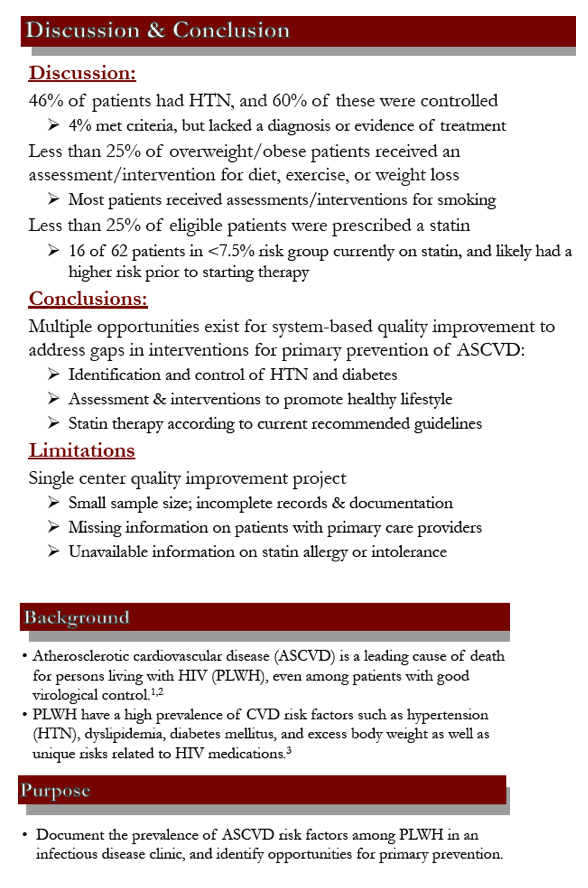
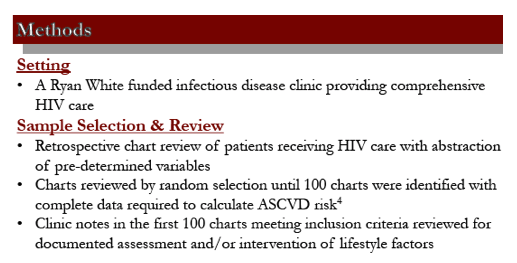
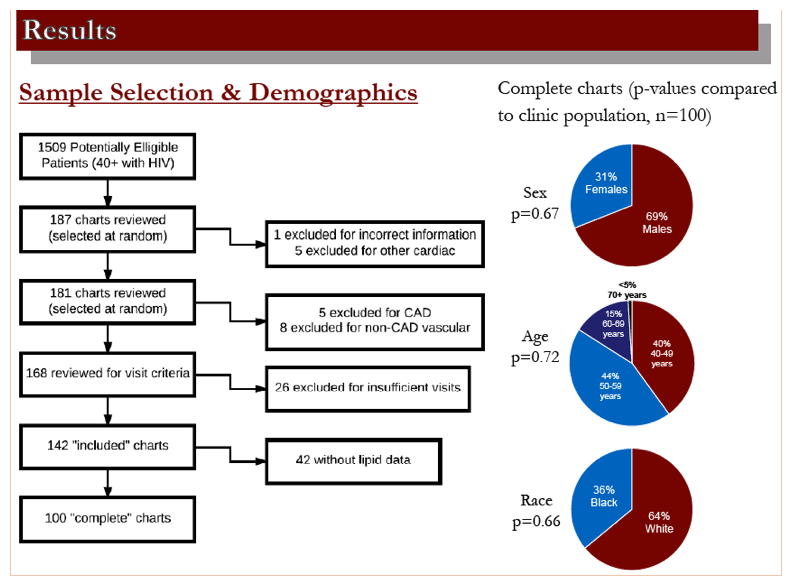
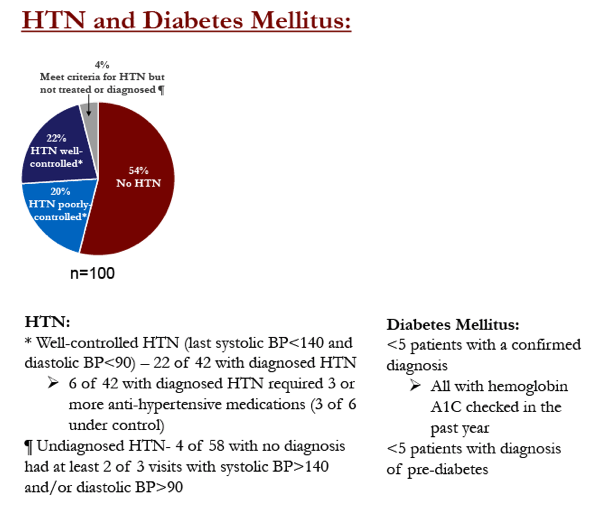
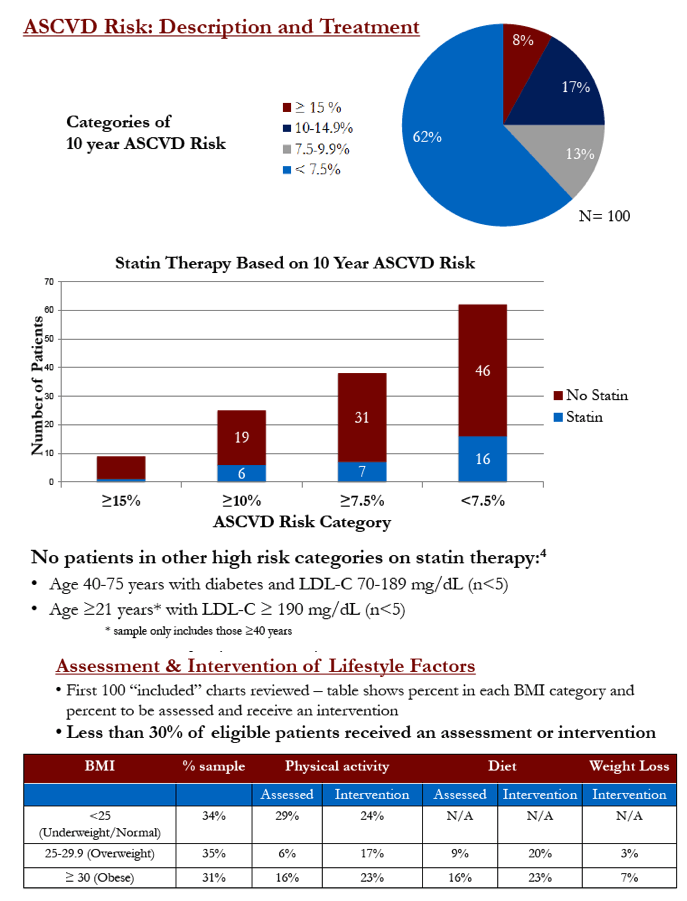
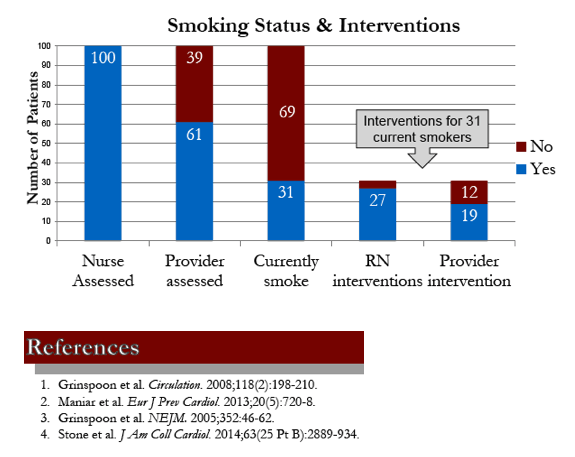
|
| |
|
 |
 |
|
|